Roof of the World
(23-26 January)
During my five months in China, I’ve gradually adjusted to living with different cultures around me. However, little prepared me for what I saw next on my travels. After saying goodbye to my parents at Xi’an station, I boarded a 32-hour sleeper train to Tibet.
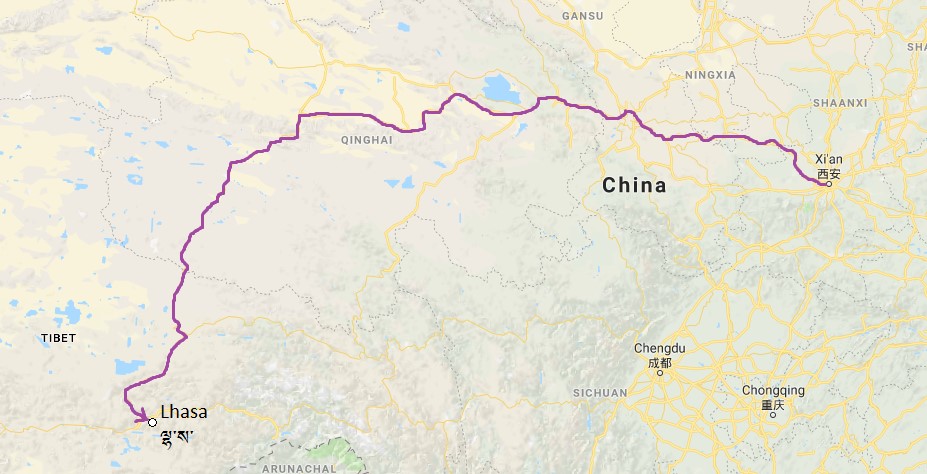
A solo traveller in the Highlands once told me that China gets more interesting the further west you go. I feel now I can see his point. Tibet is an autonomous region in the southwest of China, however its culture, language, history and geography are very different from China’s east. It occupies the largest and highest plateau on Earth, giving it the nickname “the roof of the world”, with the ground at an average height of 4,500 metres above sea level (over four times the height of the Five Sisters in Kintail).
The journey into Tibet was fascinating. The train had to run at very high altitudes to get on to the Tibetan Plateau (it’s nicknamed “the sky train” for being the highest operating train in the world), so high that each cabin needed its own oxygen supply. After 20 hours on board, I began feeling the effects of the altitude: I was more tired than usual, and it felt like there was an inflating balloon inside my head. Some first-timers in Tibet develop high altitude sickness, which can get quite serious, but fortunately I adjusted within a day or two.
The train passed through breath-taking scenery: rugged snow-capped mountains, vast grasslands, frozen lakes, herds of yaks, villages, temples and Tibetan prayer flags billowing in the wind. We would often go miles without seeing a single person or building outside, making it hard to believe I was still in China. What I found most fascinating was meeting Tibetan people on board. They looked noticeably different from the Chinese passengers, and they wore their traditional clothing and spoke their own language.
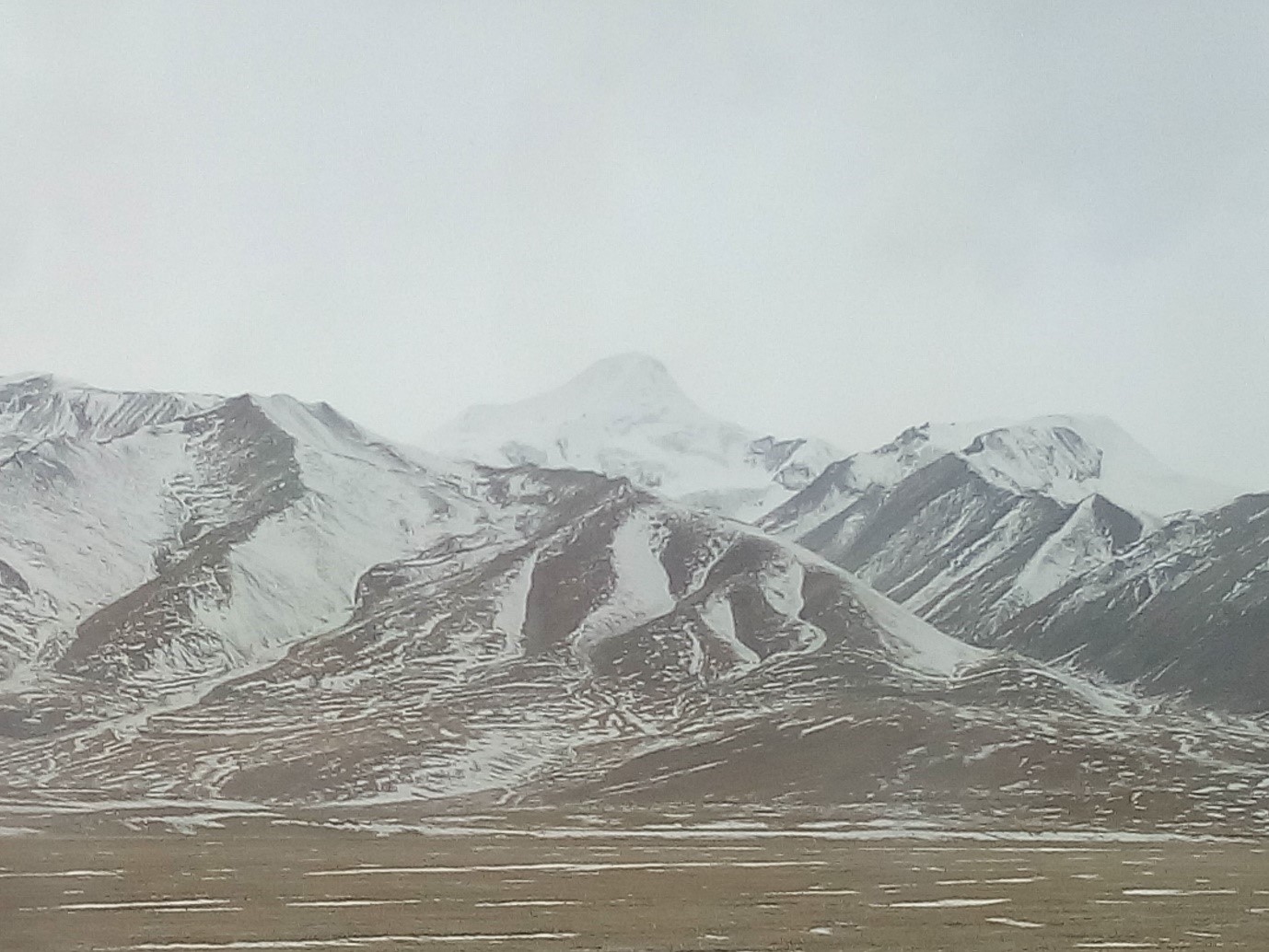
Scenery from the train window
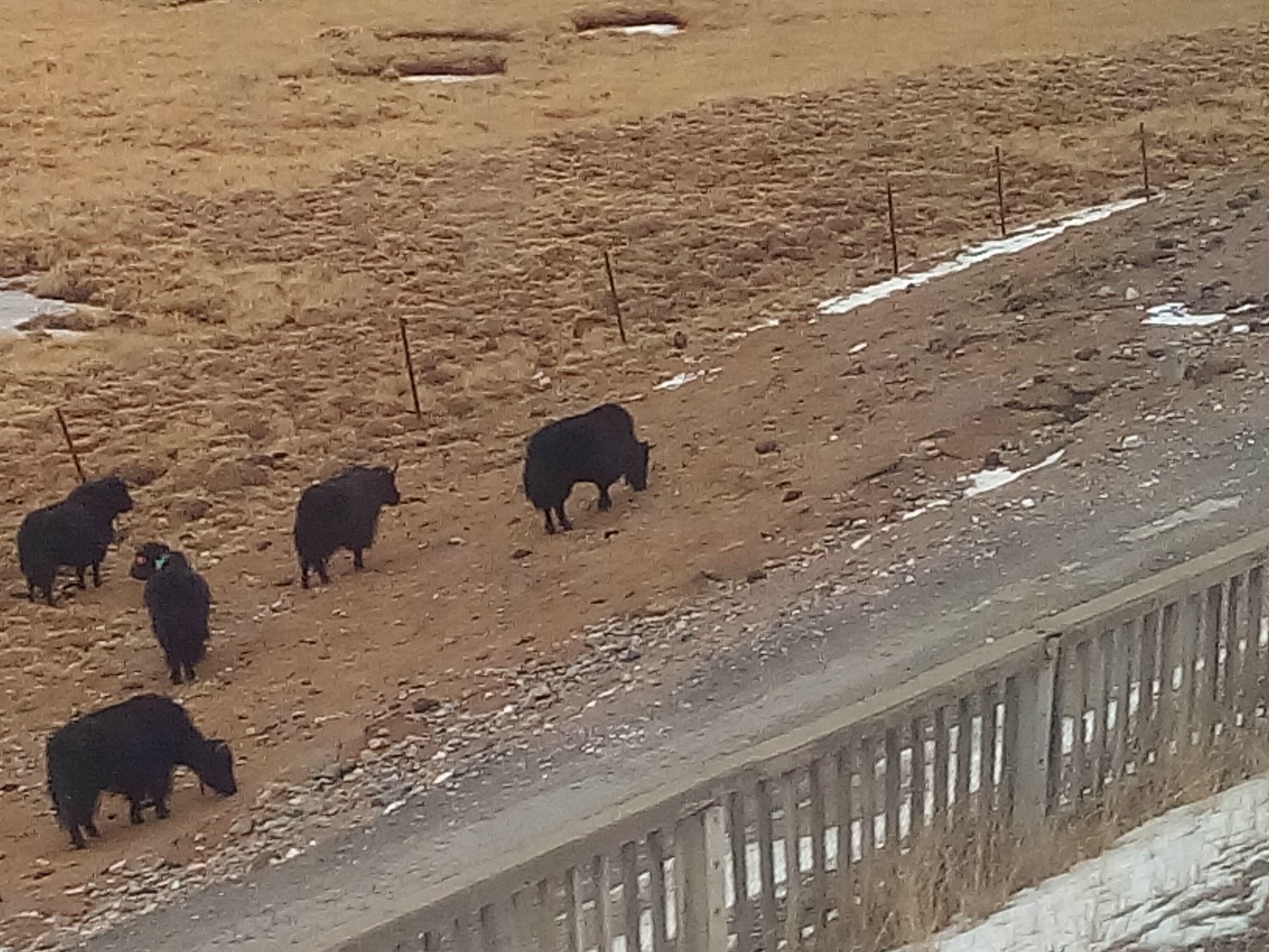
Yaks grazing
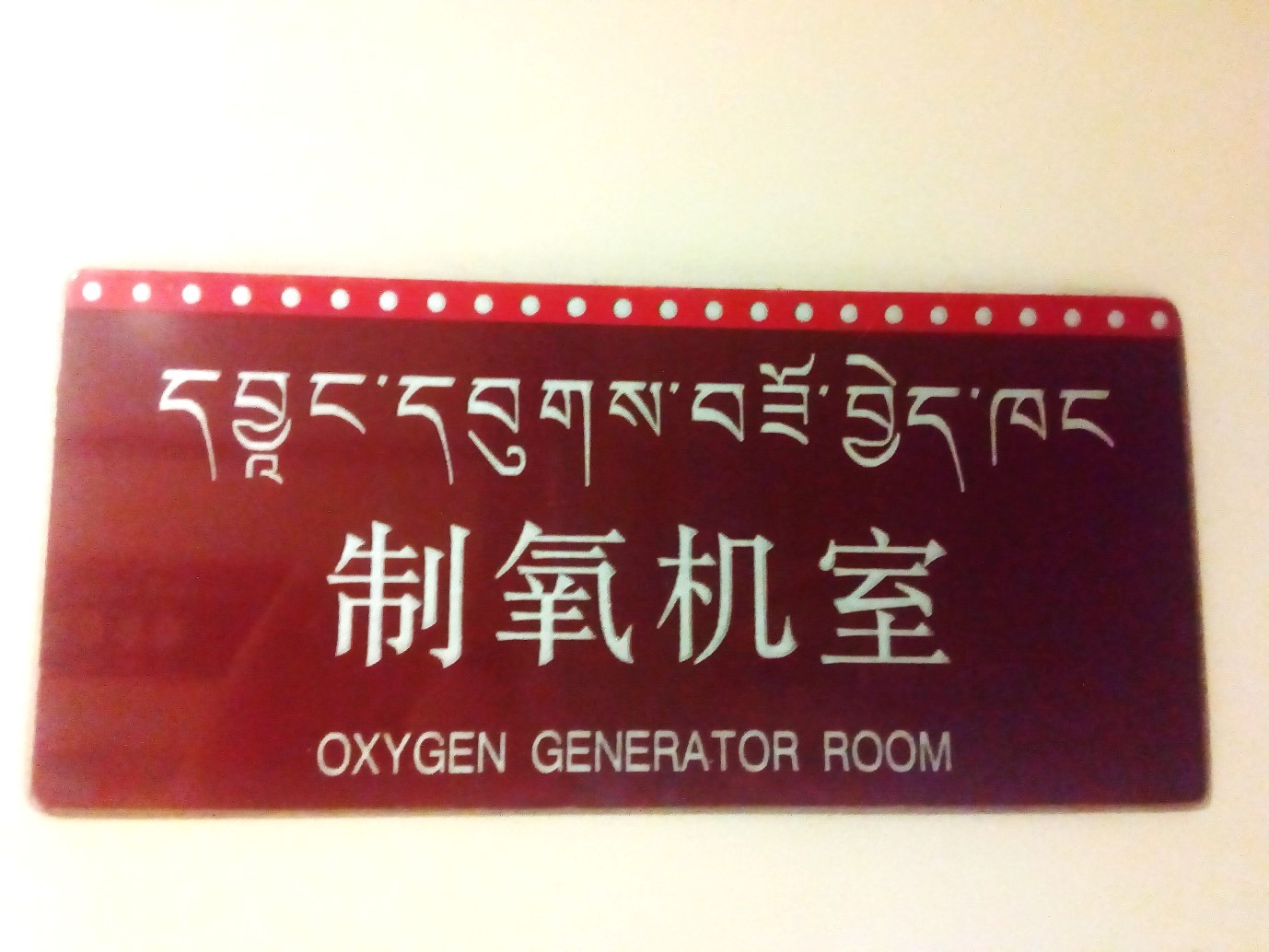
Sign with Tibetan language alongside Chinese and English
Eventually the train arrived in Lhasa: a city surrounded by mountains 3,650 metres above sea level. Because of the political tension in Tibet, all foreigners need to bring a special permit and must join a guided tour. When I got off the train, I was escorted to a separate building to have my documents checked, then picked up by my tour guide and taken to my hotel.
I didn’t do much but rest during my first day in Lhasa, however seeing the city for the first time left a powerful impression. I’d never seen a place like it. It was modern, with banks, shops, billboards, traffic jams and cashless payment, still it had a very mystical, “Himalayan” atmosphere. Many people on the street wore traditional robes, jewellery and hairstyles, and I often saw monks passing by, sitting at noodle bars or on their phones. From my hotel room I had a spectacular view of barren mountains and prayer flags hanging over every rooftop.
The next day I met the rest of the tour group for breakfast, then we set off to explore the city. I’d booked a 3-day tour in Tibet (the only one I could afford) which involved visiting Lhasa’s famous religious sites. The first day we went to Drepung Monastery and Sera Monastery, and the second day to Jokhang Temple, Barkhor Market and the Potala Palace (the winter residence of the Dalai Lama). Each place felt almost other-worldly, with white stupas, golden statues, strong incense, prayer wheels, large rock paintings, devout pilgrims, chanting monks and the chiming of bells all around. A few of the sites were quite high up on the mountainside, where it was calmer and quieter, where we could breathe the fresh mountain air and see the city from above.
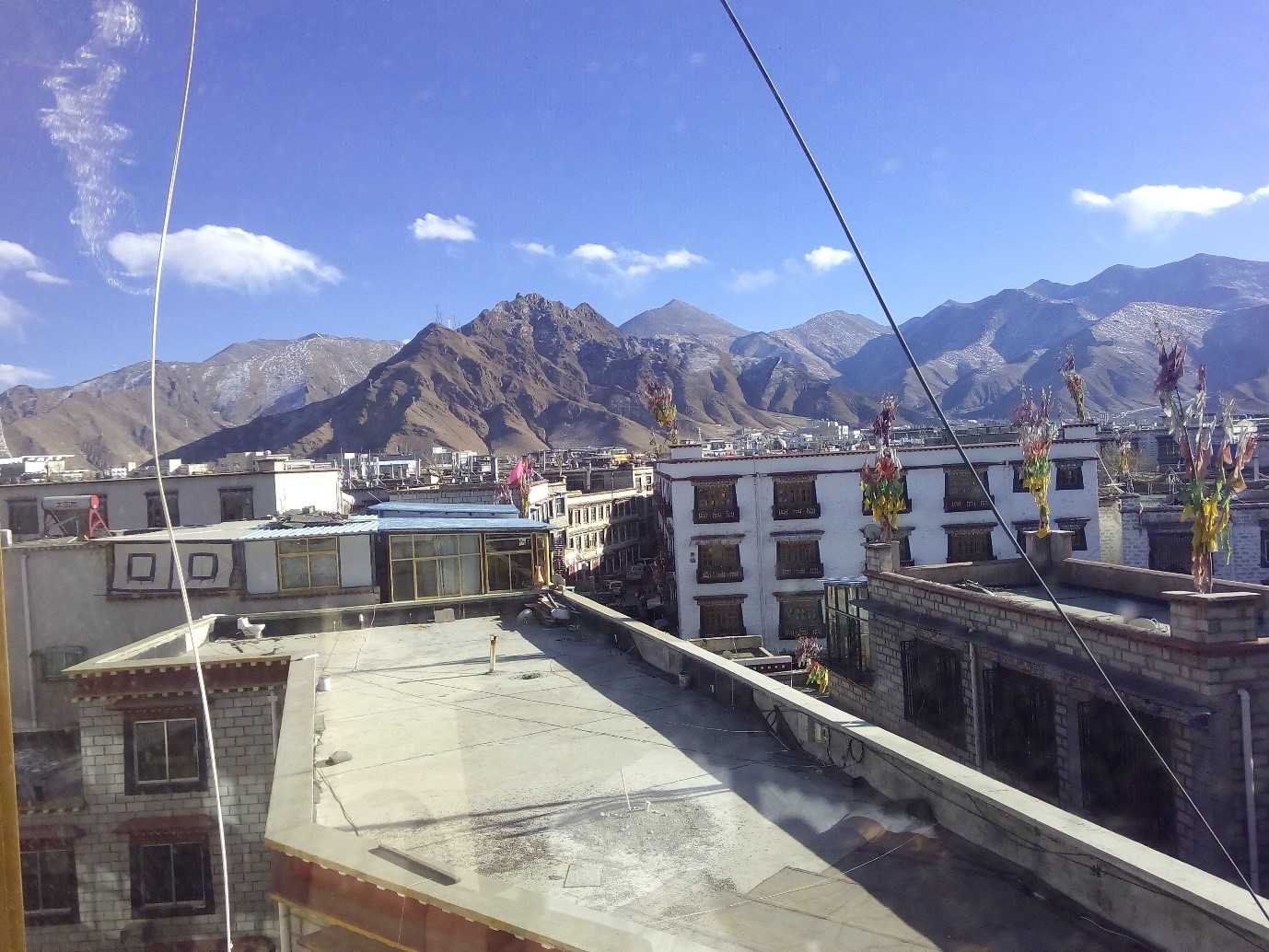
View from my hotel room
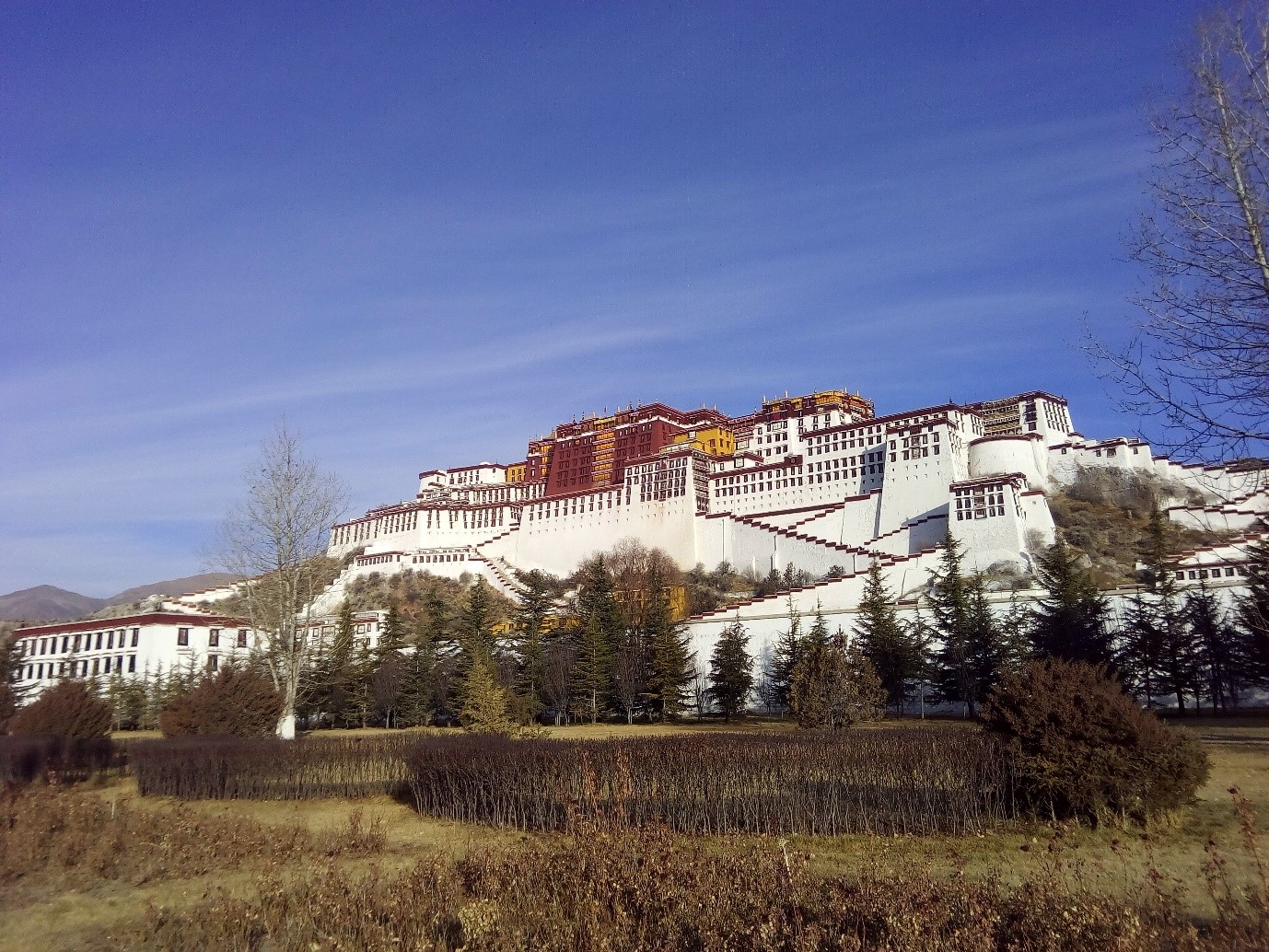
The Potala Palace
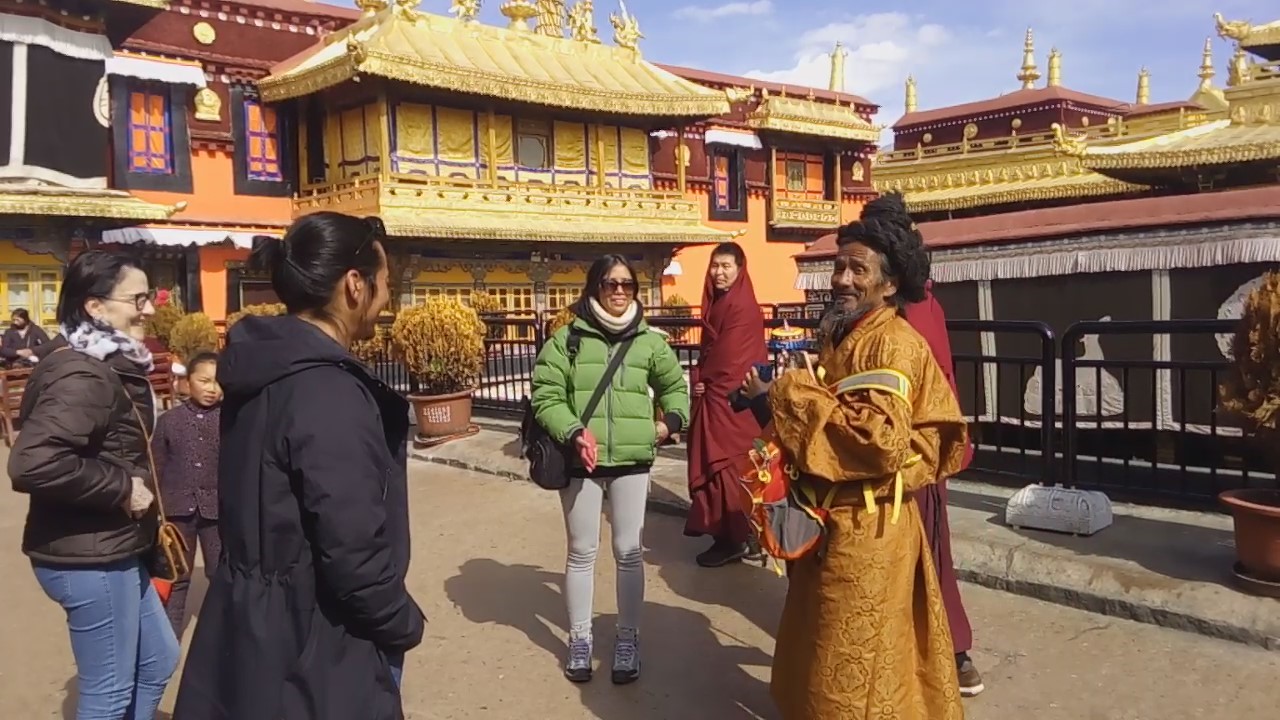
Our tour guide talking with a pilgrim at Jokhang Temple
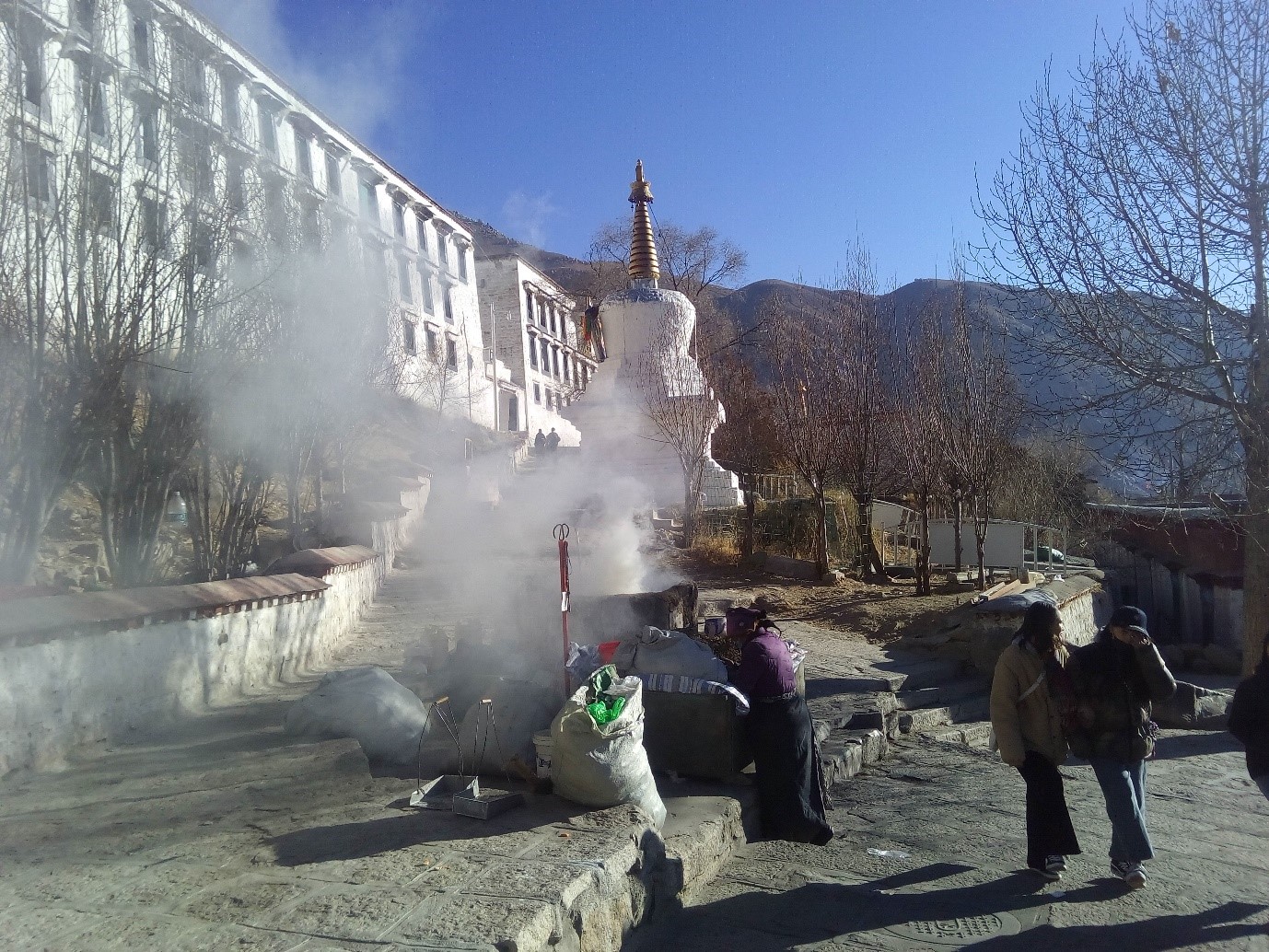
Drepung Monastery
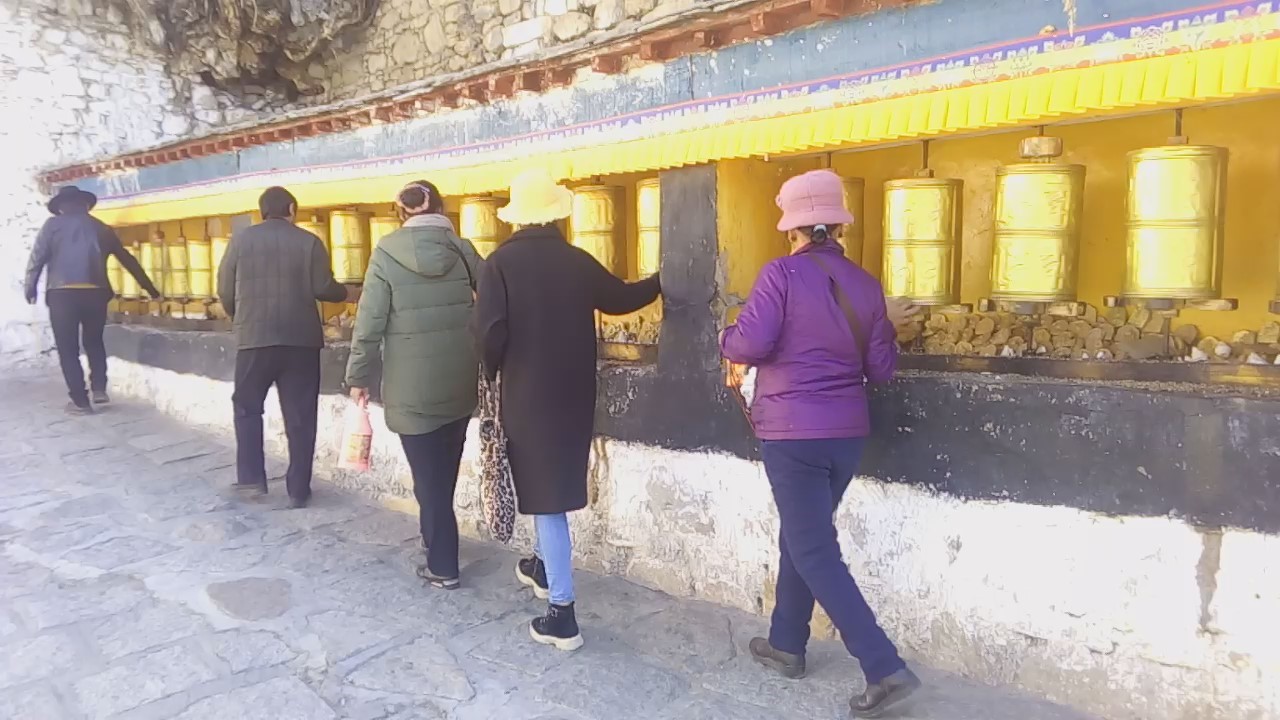
Pilgrims spinning prayer wheels
Our tour guide was very knowledgeable, and he told us about interesting and unique aspects of Tibetan culture. For example, the Tibetans have a custom called “sky burial”, where they cut a deceased person’s body into pieces and cast them on to the mountain for birds of prey to eat (they believe the spirit has left the body, so the body is merely an empty vessel to be returned to the environment). The most interesting custom I witnessed was in Sera Monastery, where monks would gather everyday to do a theatrical debate of the Buddhist scriptures, involving lots of shouting, clapping and exaggerated gestures, making quite a dramatic performance to watch.
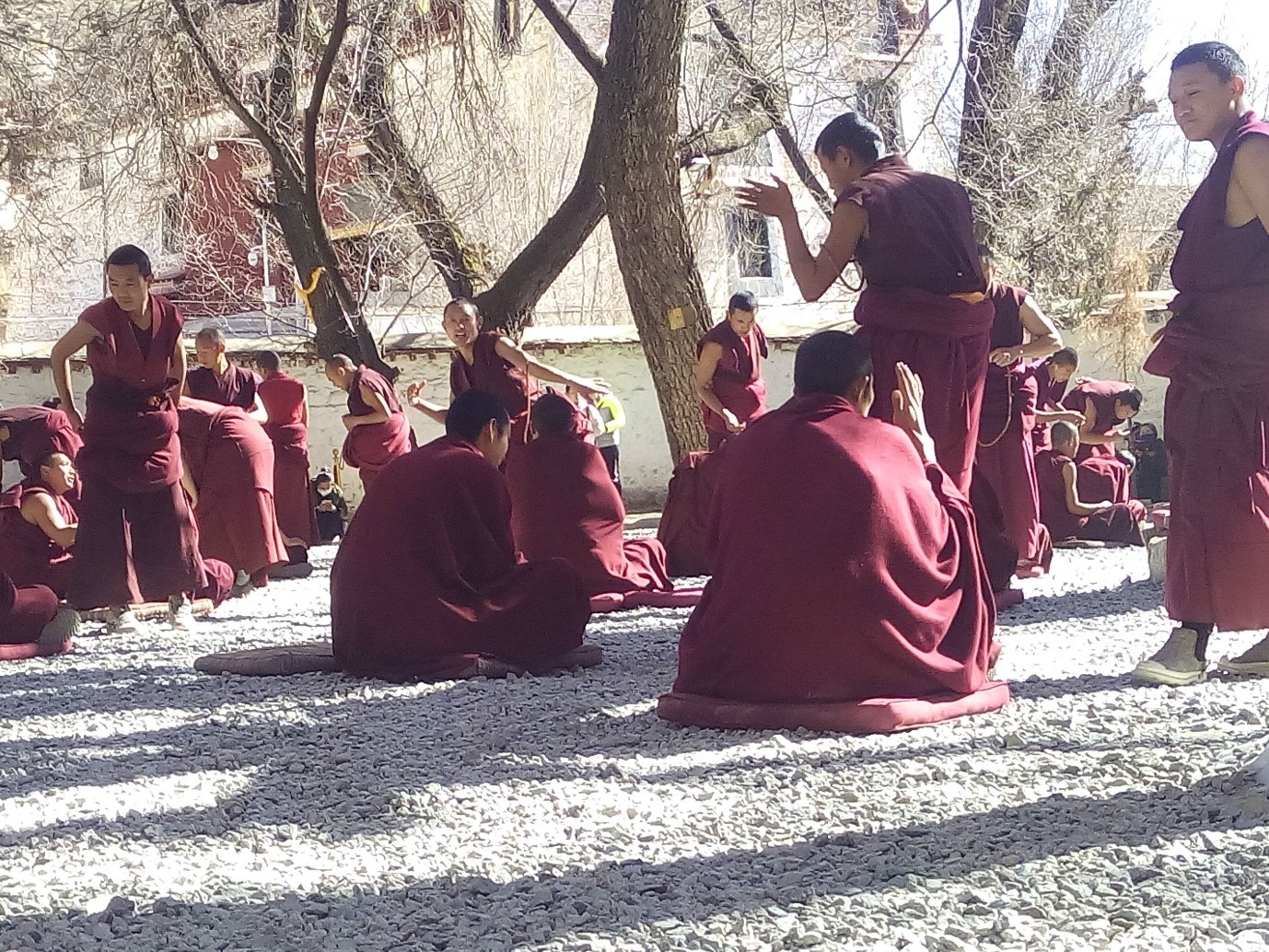
Monks debating
Tibetan food was also pleasantly surprisingly. From what I tried it seemed almost like a combination of Chinese and Indian, with dishes such as noodles, spring rolls, curry, rice, naan bread, dumplings, and bhatuk (pasta soup with yak meat). “Butter tea” was also a specialty: black tea mixed with butter and salt, which provides extra calories for the high altitude. I know it sounds revolting, but I didn’t think it tasted so bad. I saw locals drinking it all the time; even the monks in the chapels carried large flasks of butter tea, taking occasional sips while chanting their prayers.
My favourite day in Lhasa, however, was my last day, as I had an entire morning and afternoon of free time. I had the chance to simply wander through the city streets and see what life was like for Tibetans away from the tourist sites. From a distance, Tibet can often seem like an enchanting, mystical place, so I was curious to see what everyday life looked like, in the banks, supermarkets, shopping streets and noodle bars. I spent that day enjoying local food, talking with fascinating people, and trying to speak Tibetan, which brought some smiles to the locals’ faces. I’d learnt a few phrases before coming, such as “tashi delek” (hello) and “di kong katsö re?” (how much is this?). It wasn’t much, but it really improved my interactions with people, and my tour guide would often take time to teach me new words and encourage my interest.
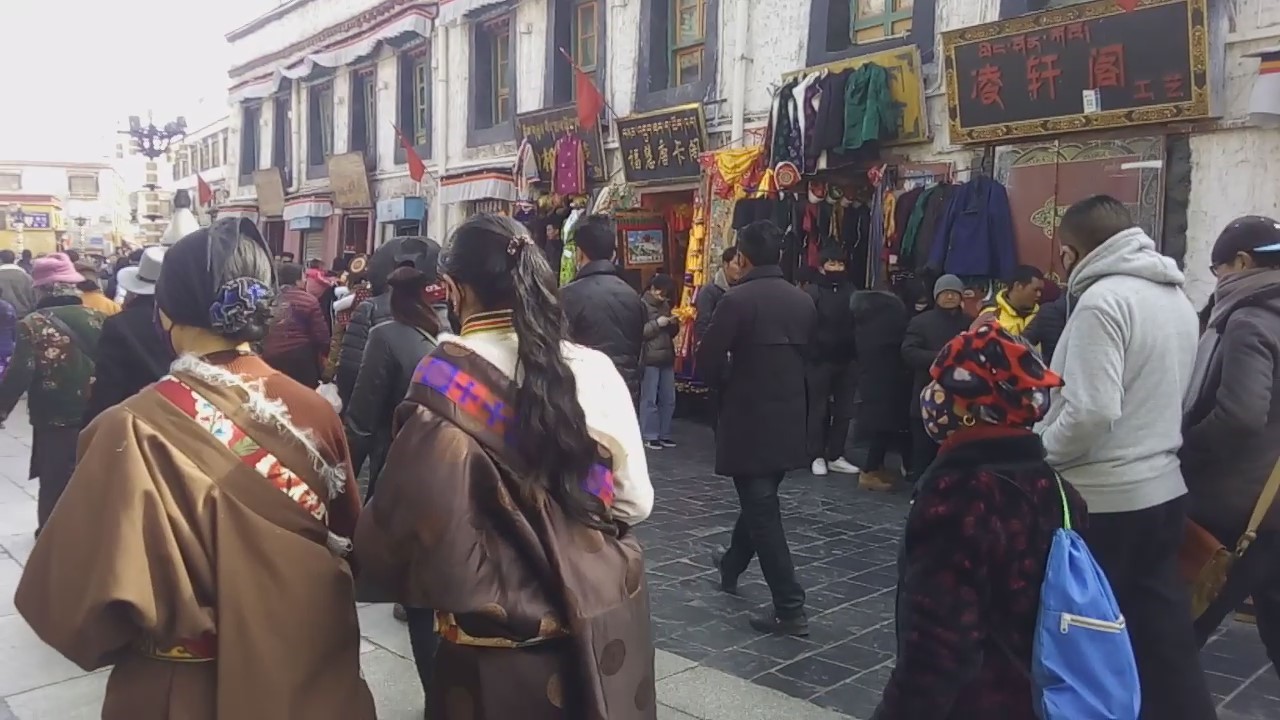
A street in Lhasa
Going to Tibet left a very heavy impression on me. It broadened my understanding of China (and the world) and gave me much to reflect on. I’m grateful I had the chance to go there, even for a few days, as I’m not sure I’ll ever have the opportunity again.
While the others in the group continued their tour westward to the city of Shigatse, Mount Everest Base Camp and Kathmandu in Nepal, I boarded my train out of Tibet to explore what the rest of China’s “Wild West” had to offer…
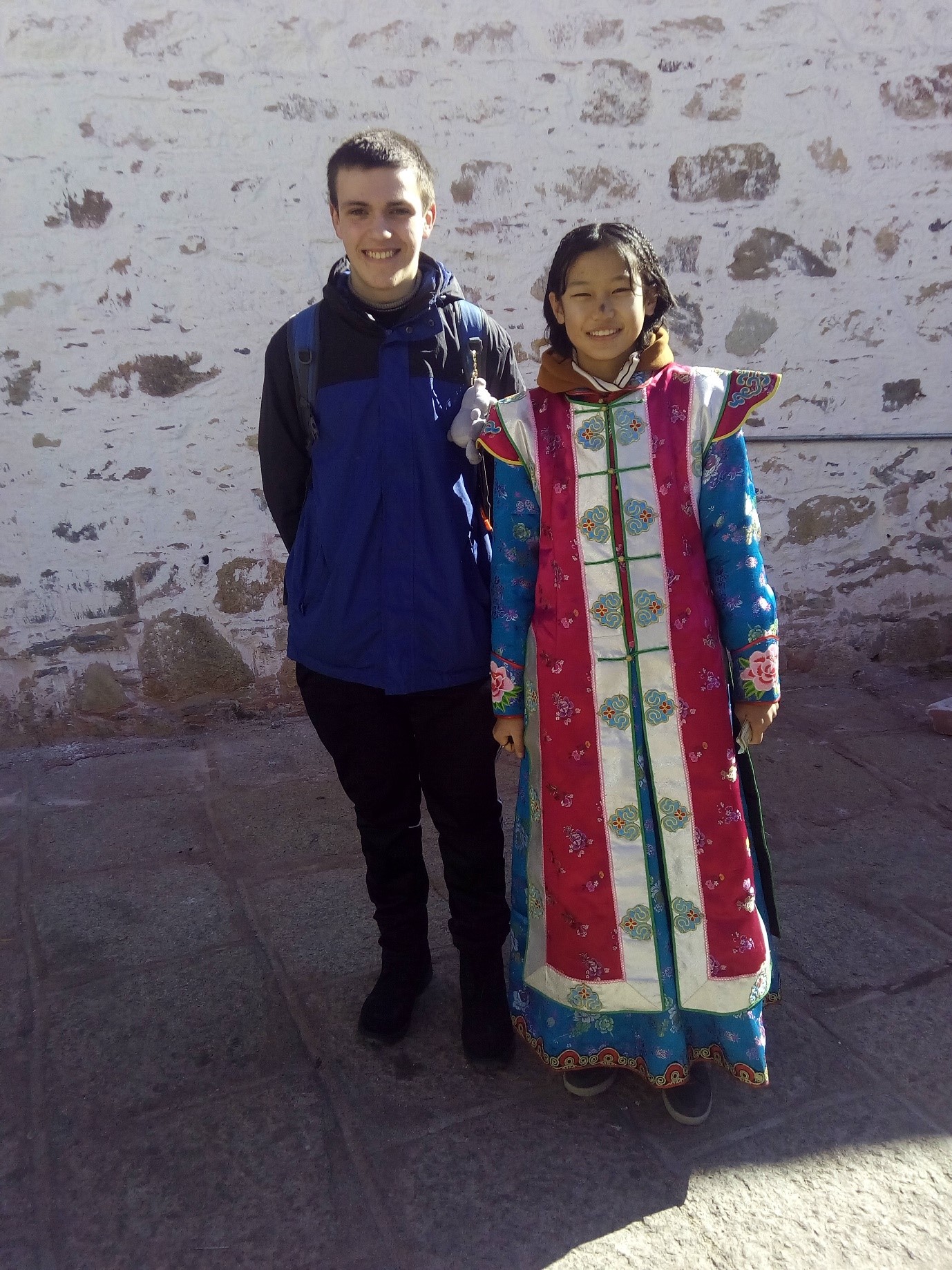
Picture taken with a local
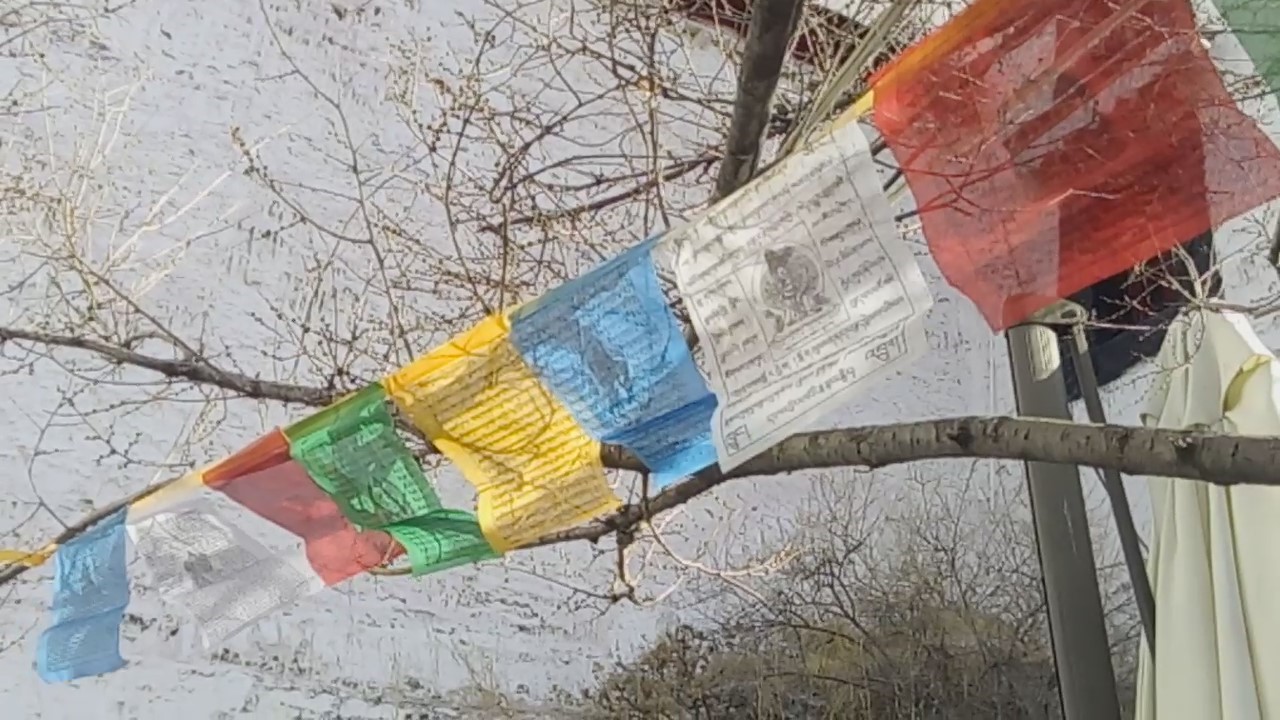
Prayer flags
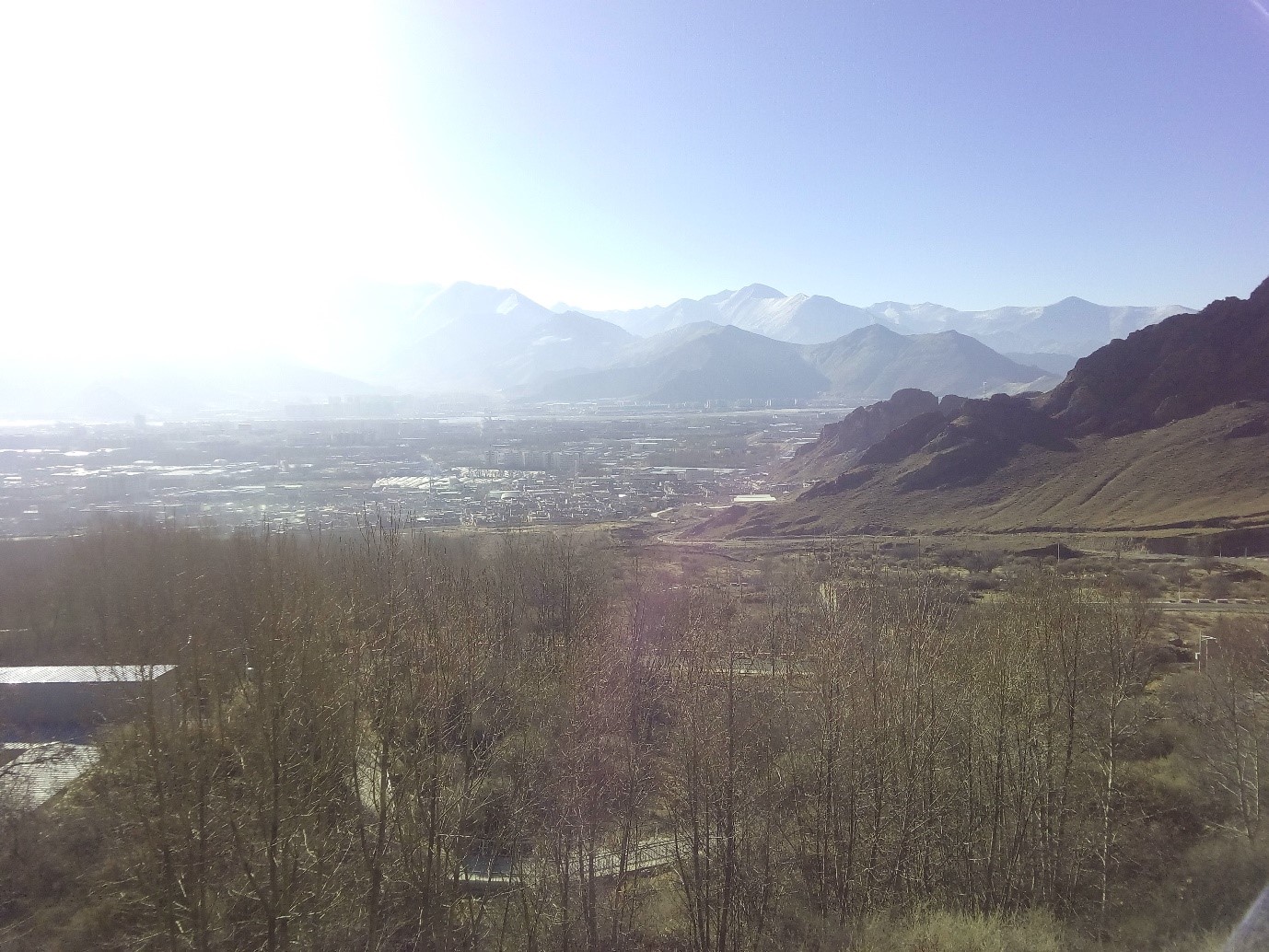
Lhasa from above